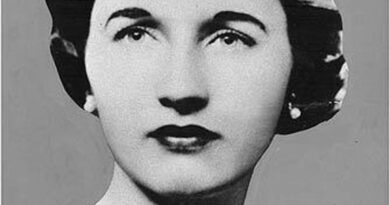Meredith Chapman Killed By Wife of Love Triangle Affair in Randor Township Pennsylvania
Meredith Sullivan Chapman was a young communications leader whose career seemed to move only upward. After years of building a reputation at the University of Delaware—where she worked on marketing, digital strategy, and campus outreach—she accepted a new post as an assistant vice president at Villanova University. Friends and colleagues described her as energetic, generous with mentorship, and unusually adept at the fast-changing world of social media and brand storytelling. She was recently settled into a rental home in Radnor Township, part of Philadelphia’s storied Main Line communities, and was mapping out the next phase of her professional and personal life when violence ended it.
Setting and Context
Radnor Township is a quiet suburban enclave with manicured streets, leafy sidewalks, and a constant rhythm of students, faculty, and residents moving between campuses and train stations. It is not a place associated with sudden eruptions of lethal violence. That incongruity—between a tranquil neighborhood and a crime of extreme finality—would shape how the public digested what happened on April 23, 2018. The setting also mattered in practical terms: the proximity of neighbors, the habits of commuters passing through, and the local police department’s experience with property crimes and domestic incidents rather than premeditated homicide.
The People at the Center
At the center of the event were three people whose lives had become entangled. Meredith, 33, was newly affiliated with Villanova. Mark Gerardot, a marketing professional, had worked with her and formed a relationship that moved beyond the professional. His wife, Jennair Gerardot, confronted by the collapse of her marriage, spiraled into surveillance, obsession, and rage. The combination of emotional devastation, planning, and access to a firearm would prove catastrophic. Those who knew Meredith saw her as a driven colleague and friend; those who knew the Gerardots observed a marriage at a breaking point. The collision of these biographies formed the context for what unfolded.
The Day of the Crime
On April 23, 2018, Radnor Township police were called to Meredith’s home after reports led officers to conduct a welfare check. Inside, investigators discovered two bodies: Meredith, shot shortly after returning home, and the shooter, Jennair Gerardot, dead from a self-inflicted gunshot wound. The layout of the scene indicated planning rather than a spontaneous confrontation. Windows and doors bore signs of an unlawful entry; items within the house suggested the shooter had been waiting for a precise moment, anticipating Meredith’s arrival. There was no evidence of a struggle spanning multiple rooms, no extended argument overheard by neighbors—only the stark sequence of ambush and suicide.
A Planned Attack
Investigators concluded the killing was targeted and deliberate. Prior to the shooting, Jennair had taken steps to monitor her husband and Meredith: tracking movements, reviewing communications, and reconstructing timelines. That pattern of surveillance became part of the evidentiary narrative explaining motive, intent, and the absence of randomness. In law-enforcement terms, it moved the event from domestic dispute to premeditated murder followed by suicide. The act was not aimed at theft or generalized revenge; it was a singular decision to end Meredith’s life and her own, compressing a complex marital crisis into a few irrevocable seconds.
Motive and the Psychology of Obsession
Understanding motive in cases like this relies on both documented behavior and the emotional currents that precede violence. The breakdown of a marriage, feelings of betrayal, and humiliation can metastasize into fixation. In this case, planning replaced processing. Surveillance replaced therapy. The imagined restoration of control—a fantasy that violence often promises the perpetrator—took hold. What is striking is not only the existence of an affair but the transformation of grief into a step-by-step operational plan. The qualities that make planning “effective” in ordinary life—discipline, focus, attention to detail—can, when corrupted by obsession, produce a chilling efficiency.
The Investigation’s Through-Line
Radnor detectives coordinated with neighboring agencies and forensics teams to reconstruct the final hours. The physical evidence inside the house, the ballistic findings, and digital traces—search histories, messages, calendars, and device locations—aligned with a tight chronology. There were no unknown intruders to track, no broader threat to the public to warn about, and no lingering questions about who pulled the trigger. Even with the central facts quickly established, investigators still faced the painstaking work of notifying families, cataloging evidence for the record, and closing out every plausible alternative theory, as the integrity of any high-profile case requires.
Community Impact
The shock within Radnor Township was immediate. For Villanova and the University of Delaware communities, the loss was personal and public at once: students who had seen Meredith’s work online or in campus events now confronted a memorial instead of a message; colleagues who had traded ideas about campaigns and enrollment strategy now traded condolences. Residents of the Main Line, used to the steady comfort of low crime rates, watched police tape go up on a quiet block and understood that even privileged zip codes are not immune to domestic violence’s worst outcomes. Houses can be peaceful; people are more complicated.
Media Attention and Public Narrative
The case’s elements—an accomplished young professional, an extramarital relationship, a scorned spouse who planned an ambush—generated intense national coverage. Headlines used the shorthand of a “love triangle,” a phrase that can distort more than it explains. What emerged underneath the tabloid framing were durable themes: the lethal potential of domestic violence, the risks of stalking and technological surveillance within relationships, and the unique vulnerability of public-facing professionals whose routines are easy to observe. The story was not only about who loved whom; it was about how anger, planning, and access to a weapon intersected with tragic precision.
The Human Ripples
For Meredith’s family and friends, the ripples of grief were profound. She had married young and later divorced; she was beginning a new chapter marked by professional autonomy and personal possibility. Those who worked with her remembered her teaching spirit—how she could translate jargon into strategies students and colleagues could use, how she brought energy into rooms that typically drained it. The pain for the Gerardot family, too, was layered: shock at a loved one’s actions, sorrow at two deaths, and the complicated mourning that follows a murder–suicide. Communities close ranks in sorrow, but they rarely find easy closure.
Domestic Violence in Professional Clothing
One of the case’s most sobering lessons is that domestic violence can wear the trappings of professional life. Calendars, client dinners, conferences, and commutes can become cover for surveillance, control, and escalating rage. Because so much of modern professional life is public—bios, headshots, office locations, social posts—someone intent on harm can collect enormous detail without crossing a physical threshold. Safety planning for professionals who find themselves targeted now includes digital hygiene, route variation, and, when necessary, coordination with campus or corporate security. Meredith’s case turned these abstract recommendations into a concrete, devastating example.
Institutional Responses
In the weeks that followed, institutions connected to the people involved focused on care, communication, and commemoration. Universities offered counseling services, organized gatherings to remember Meredith’s contributions, and reviewed the ways they communicate risk to staff and students in the wake of off-campus violence. Law enforcement emphasized their open channels for domestic threats, urging anyone who feels surveilled or threatened by a partner or former partner to document, report, and seek protective orders where appropriate. The messaging sought to honor Meredith while translating grief into preventative awareness.
What We Know, What We Don’t
The central facts are settled: the date, the place, the victims, the weapon, and the sequence of shots. Yet there are always unknowns that no forensic analysis can fully resolve: the exact thoughts in the final minutes, the alternative choices that might have defused the crisis, the precise threshold where heartbreak turned into homicide. People try to close those gaps with narratives—some empathetic, some accusatory—because mysteries unsettle us. In truth, much of human decision-making at the edge of violence remains opaque even when the physical evidence is clear.
Legacies and Lessons
Meredith’s professional legacy lives on in the projects she led and the students and colleagues she encouraged. The bitterness of her loss does not erase the years of creative work and mentorship she poured into higher education communications; those remain visible in the teams she strengthened and the campaigns she shaped. The case’s legacy in public safety is equally tangible: it sharpens the discussion about early warning signs, underscores the importance of taking stalking and obsessive surveillance seriously, and reminds communities to check on one another when routines change, messages go unanswered, or worry takes hold for reasons that are hard to name.
A Responsible Retelling
Retelling a crime story carries risks: it can accidentally glamorize the perpetrator, flatten the victim’s life into a headline, or treat tragedy as entertainment. A responsible account centers the person whose life was taken, acknowledges the complex emotional landscape, and avoids speculation dressed up as certainty. In remembering Meredith Sullivan Chapman, the most accurate tribute is to restore the texture of her life—her work ethic, her optimism, her plans—while squarely naming the violence that ended it and the choices that led there. Clarity is a form of respect.
Closing Reflection
On a spring evening in Radnor Township, a sequence of decisions and grievances converged on a quiet home and ended a promising life. The setting was ordinary; the outcome was not. The story still resonates because it refuses the comfort of distance: the people involved were not abstractions, and the tools of harm were unremarkable. If there is a way to honor Meredith beyond memorials, it is to convert sorrow into vigilance—about our own relationships, about friends who may be in harm’s way, and about the subtle signs that a private crisis is edging toward public tragedy.
Discover more from City Towner
Subscribe to get the latest posts sent to your email.




